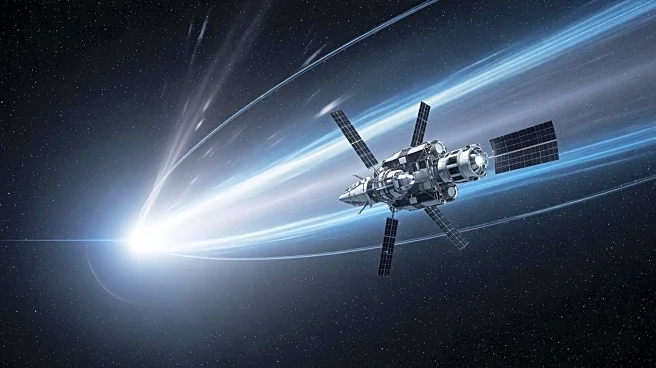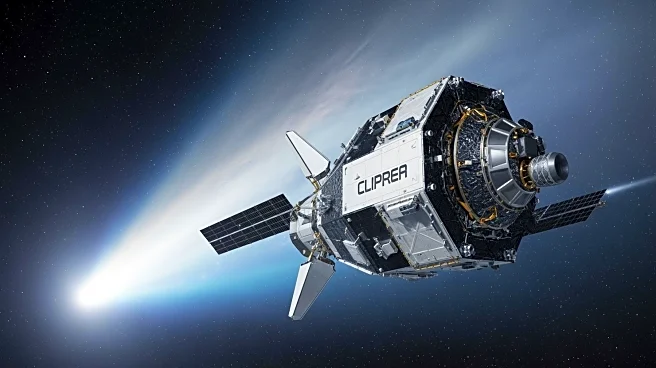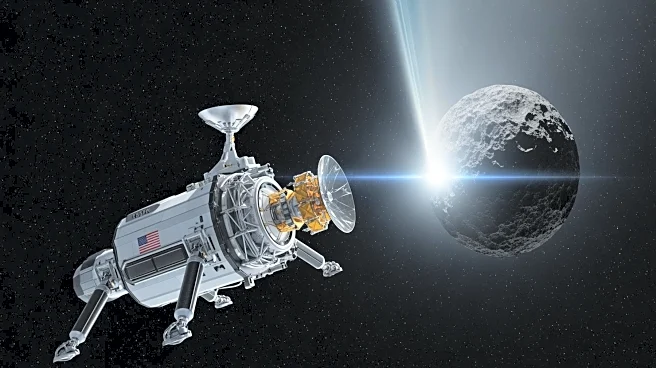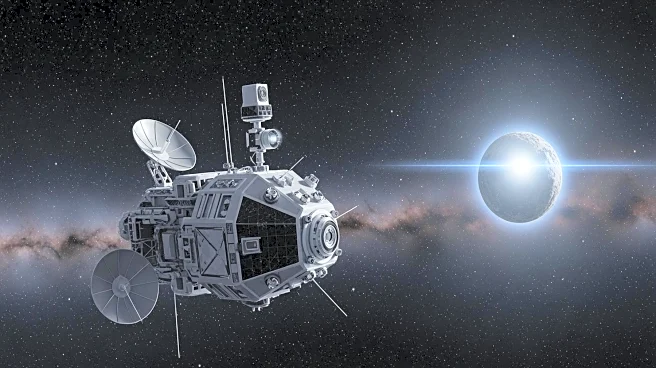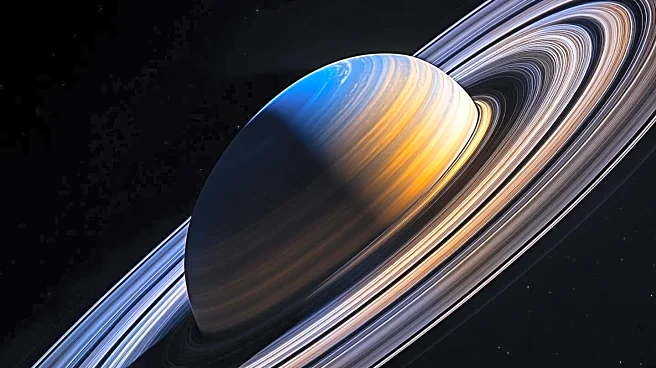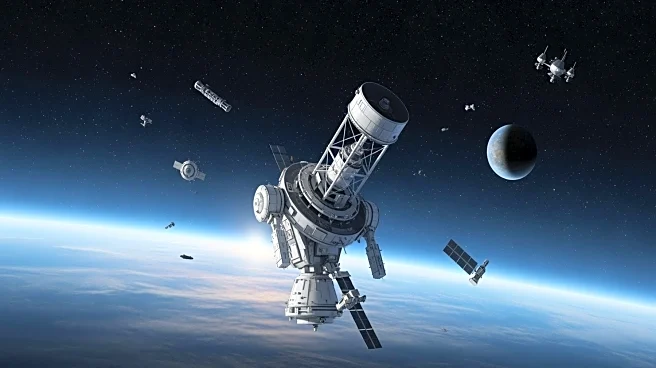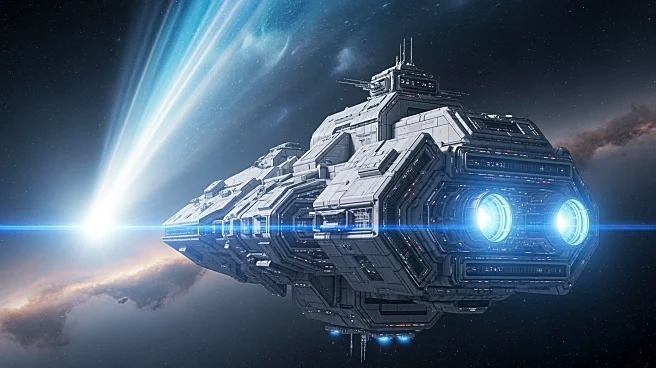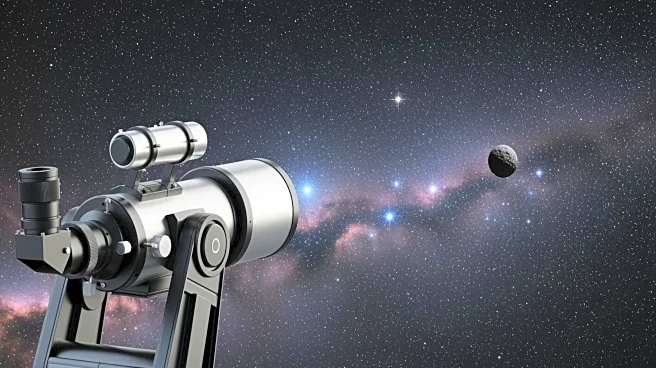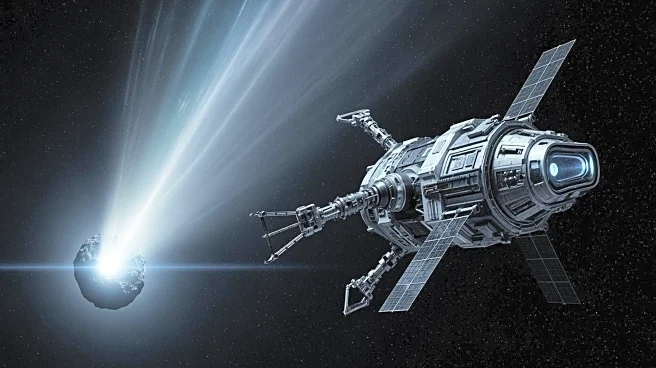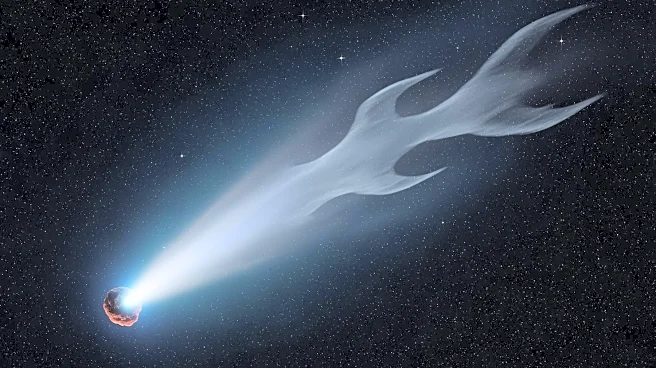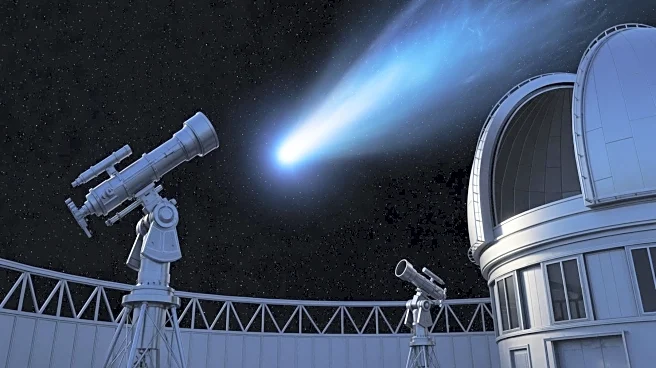What's Happening?
Two spacecraft, Hera and Europa Clipper, are set to pass through the tail of the interstellar comet 3I/ATLAS. This event presents a rare opportunity to study the ions from the comet's tail, which has been
growing as it approaches the Sun. Hera is on its way to the Didymos-Dimorphos asteroid system, while Europa Clipper is heading to Jupiter's moon Europa. Both spacecraft will pass 'downwind' of the comet, with Hera's window from October 25 to November 1, and Europa Clipper's from October 30 to November 6. Although neither spacecraft was designed for this specific task, Europa Clipper is equipped with instruments capable of detecting ions and magnetic field changes.
Why It's Important?
This encounter provides a unique chance to gather data on an interstellar comet, which is a rare event. The ability to study the ions from 3I/ATLAS' tail could offer insights into the composition and behavior of interstellar objects, which are not well understood. The data collected could enhance our understanding of the solar wind's interaction with cometary tails and contribute to broader astronomical knowledge. The mission's success could pave the way for future studies of similar interstellar phenomena.
What's Next?
The mission controllers for Hera and Europa Clipper may need to act quickly to capitalize on this opportunity. If successful, the spacecraft could be the first to directly sample an interstellar comet's tail. The data collected could lead to new discoveries about the nature of interstellar objects and their origins.
